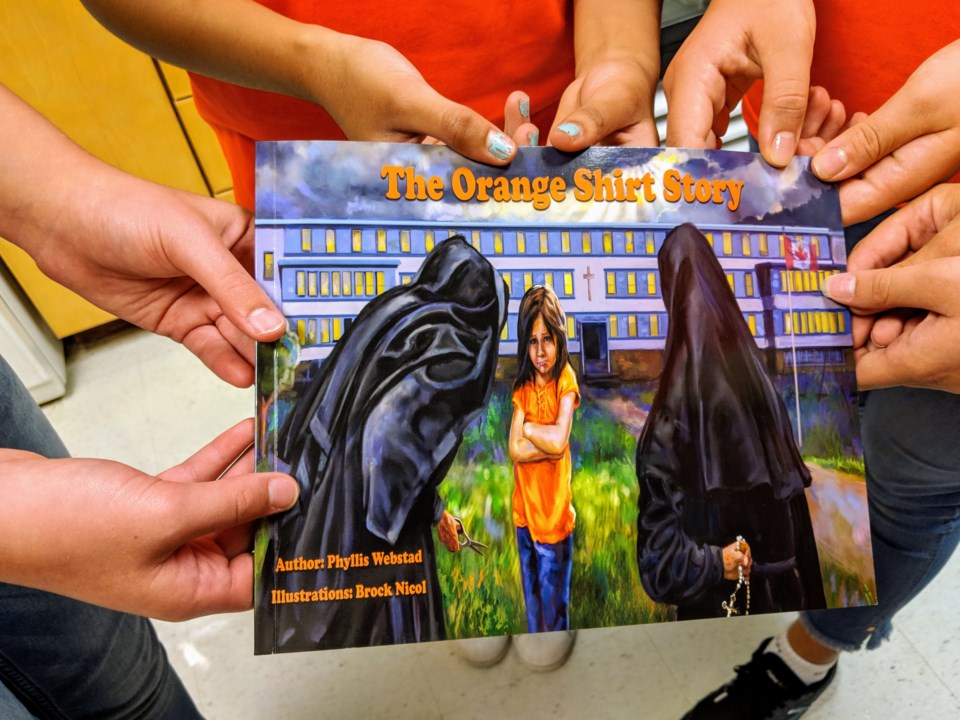It may be a great colour, but students likely aren’t wearing orange today because of its bright, happy vibe.
At some area schools, the colour choice serves to recognize the nation's ugly residential school saga.
Called Orange Shirt Day, the special commemorative event began in 2013 after Phyllis Webstad told the story of her first day attending a residential school in Williams Lake, B.C., more than 30 years ago when she was a young girl and wore a bright orange shirt only to have it taken away.
The piece in the accompanying photograph was created by a group of Beausoleil First Nation (BFN) students from Christian Island, as well as other students enrolled at Georgian Bay Secondary School in Midland.
“The two students from BFN said they wanted to remain anonymous, however many students from (Georgian Bay District) contributed to ‘growing the heart’ — a community effort, cutting out paper orange shirts — as long as students had permission from their teacher to do so,” said teacher Adam Podolski, noting that student council also helped out.
“So, it is symbolic — a youth-art-activist approach to raise awareness.”
Podolski said that any student that does not have an orange shirt can stick the individual orange paper shirt to their mask or shirt to raise awareness and to show their support for the truth and reconciliation movement.
He added: “The staff will also be wearing them on their masks.”
As for the day’s origins, it traces back to when Webstad, then six years old, wore a new orange shirt provided by her grandmother after being taken to a residential school.
Upon arrival at the St. Joseph Mission school, her shirt was confiscated along with her other belongings. This left the young Indigenous girl with the impression that no one cared about her feelings.
Since Webstad told her story, Orange Shirt Day has been held on Sept. 30 as a means to continue the conversation about all aspects of residential schools.
Erected in the 1880s, residential schools were government-sponsored religious schools created to assimilate Indigenous children into British/Canadian culture.
About 150,000 First Nation, Inuit and Métis children were removed from their families and communities, and forced to attend the schools, leaving generations of First Nations people scarred by the trauma.
The last residential school closed in Saskatchewan in 1996.



